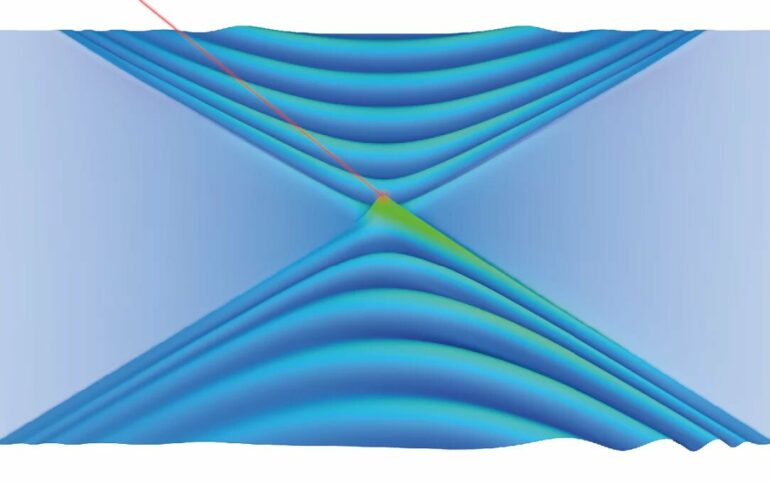Scientists from the Fritz Haber Institute of the Max Planck Society, Vanderbilt University, City University of New York, University of Nebraska, and University of Iowa have just published new results on asymmetric light-matter waves in the journal Nature. They have uncovered that low-symmetry crystals can support a new type of wave enabled by optical “shear forces.” The results offer new possibilities for compact optical technologies to enable new ways to guide light or to store information optically.
We typically use different materials to make optical components for different functionalities, such as anti-reflective coatings or lenses. In particular, crystals with asymmetric structure are very useful because light here propagates in unusual ways, enabling novel optical phenomena. Yet, not all types of crystals have been explored for photonic applications.
The research team from the FHI, along with collaborators based in the U.S., explored monoclinic beta-gallium oxide. The “monoclinic” crystal class has been previously unnoticed in past studies, and the team uncovered that these crystals exert shear forces on light propagating along its surface.
“Using the infrared radiation of our institute’s free-electron laser, our experiments could access spectral ranges that are otherwise very challenging,” says Dr. Alex Paarmann of the Department of Physical Chemistry of the FHI.
“The structure of the ‘monoclinic’ crystals used in our studies looks like a distorted cuboid, where four of six sides are rectangular but two are tilted parallelograms,” Paarmann explains.
“Because of this distortion, the new shear waves not only run very directed across the crystal surface but are also no longer mirror-symmetric. Thanks to the ‘hypberbolic’ dependence of their wave vector on the propagation direction, we can squeeze these waves into tiny volumes. These so-called ‘hyperbolic shear polaritons’ emerge from the coupling of infrared light to lattice vibrations called ‘phonons’ in these crystals.”
In contrast to previous observations of hyperbolic phonon-polaritons using crystals with a symmetric structure, the team discovered new properties of the shear polaritons: Their propagation direction depends on the infrared wavelength and their wave fronts are tilted. Optical shear phenomena are thought to be responsible for these new features, which exclusively arise because of the lower crystal symmetry and the associated alignment of the lattice vibrations. Therefore, the crystal symmetry is the fundamental reason for these discoveries.
“We expect that our results will open new avenues for polariton physics in materials with low symmetry, which include many geological minerals and organic crystals,” says Paarmann.
This will provide a much greater choice of materials for technological development, which will substantially enhance design options for compact photonic components. This means a big step forward for miniaturization of optical circuitry in future nanophotonic technology.
More information:
Nikolai C. Passler et al, Hyperbolic shear polaritons in low-symmetry crystals, Nature (2022). DOI: 10.1038/s41586-021-04328-y
Provided by
Max Planck Society
Citation:
Hyperpolic shear polaritons in low-symmetry crystals (2022, February 25)



